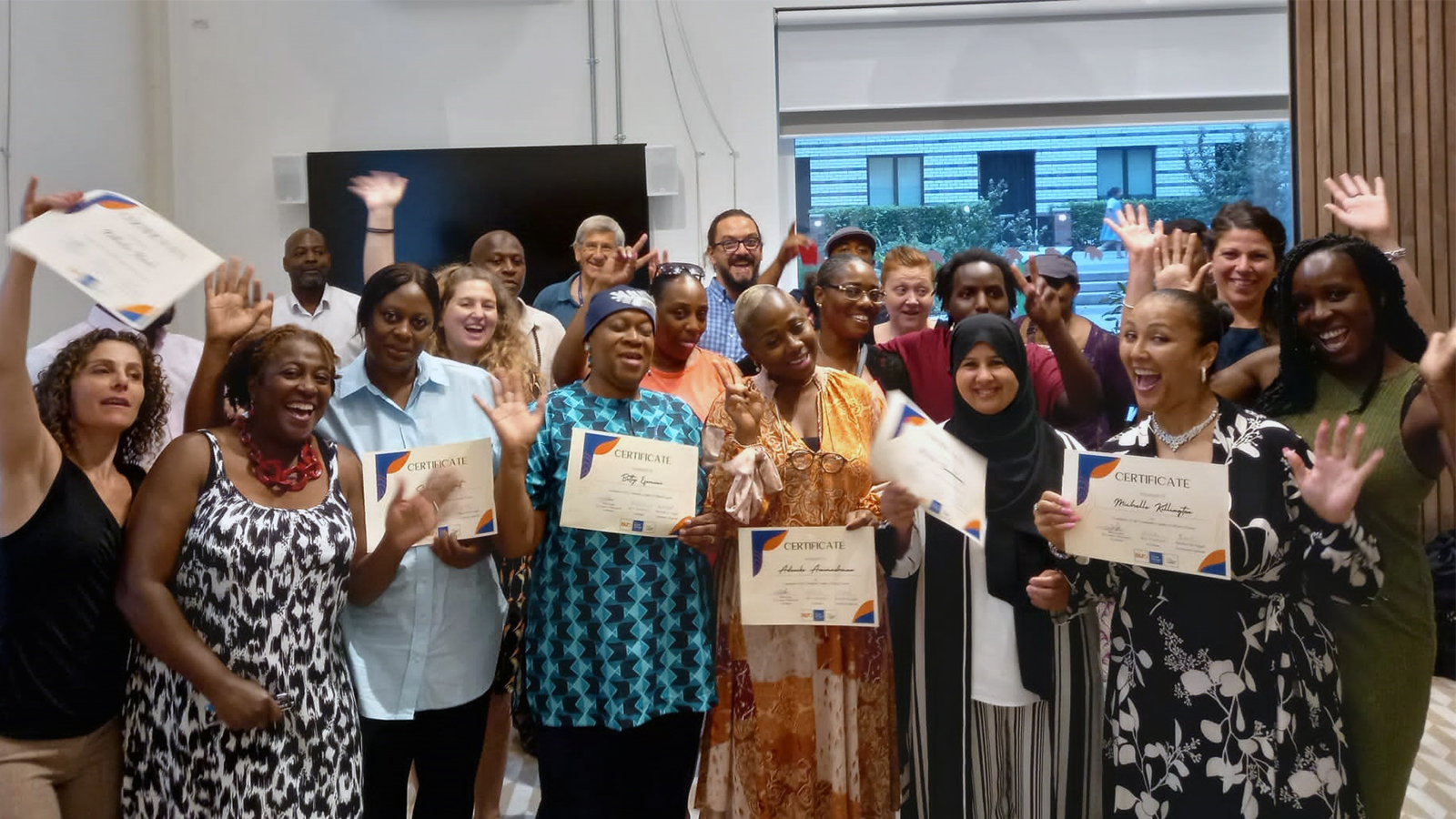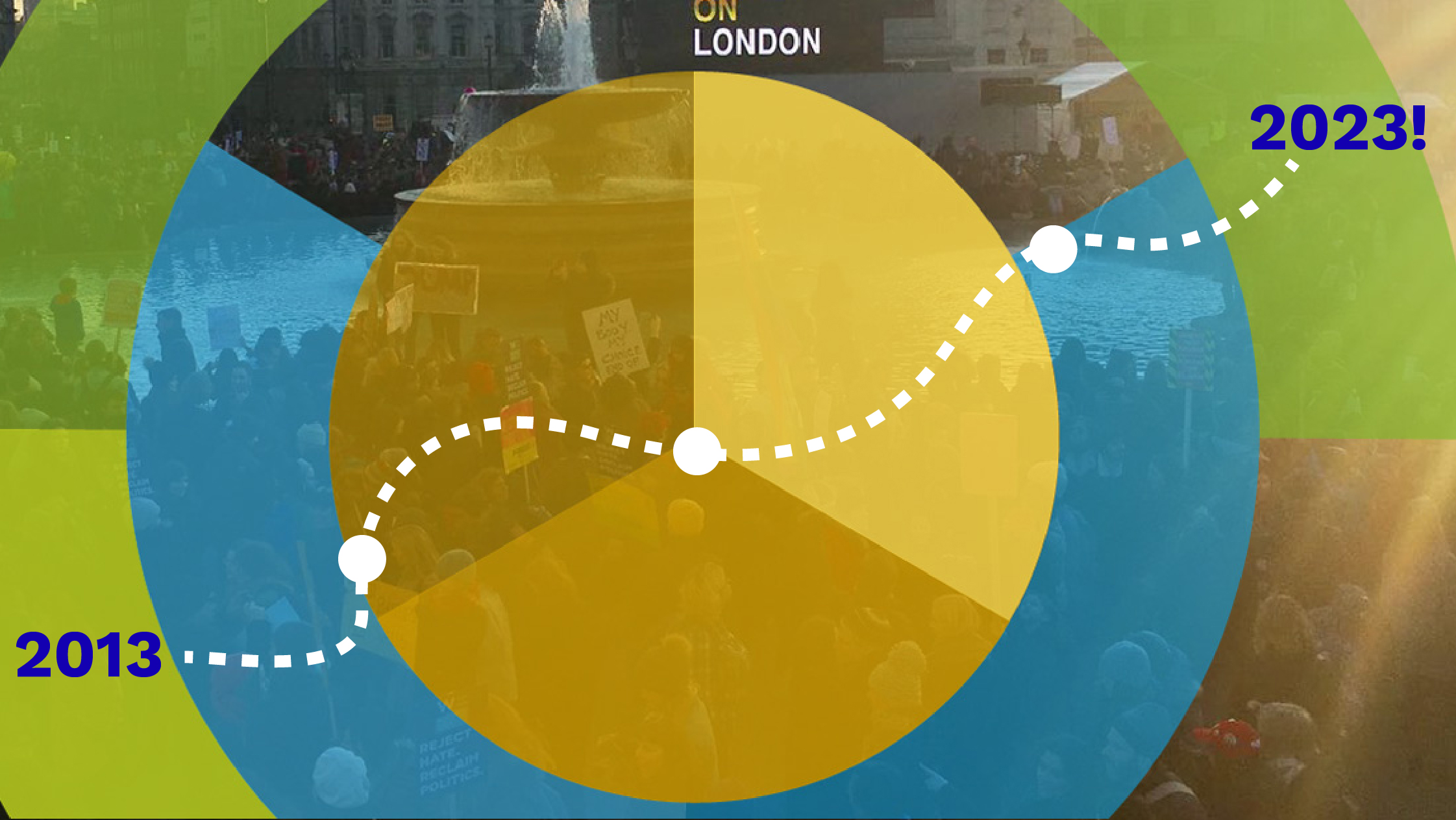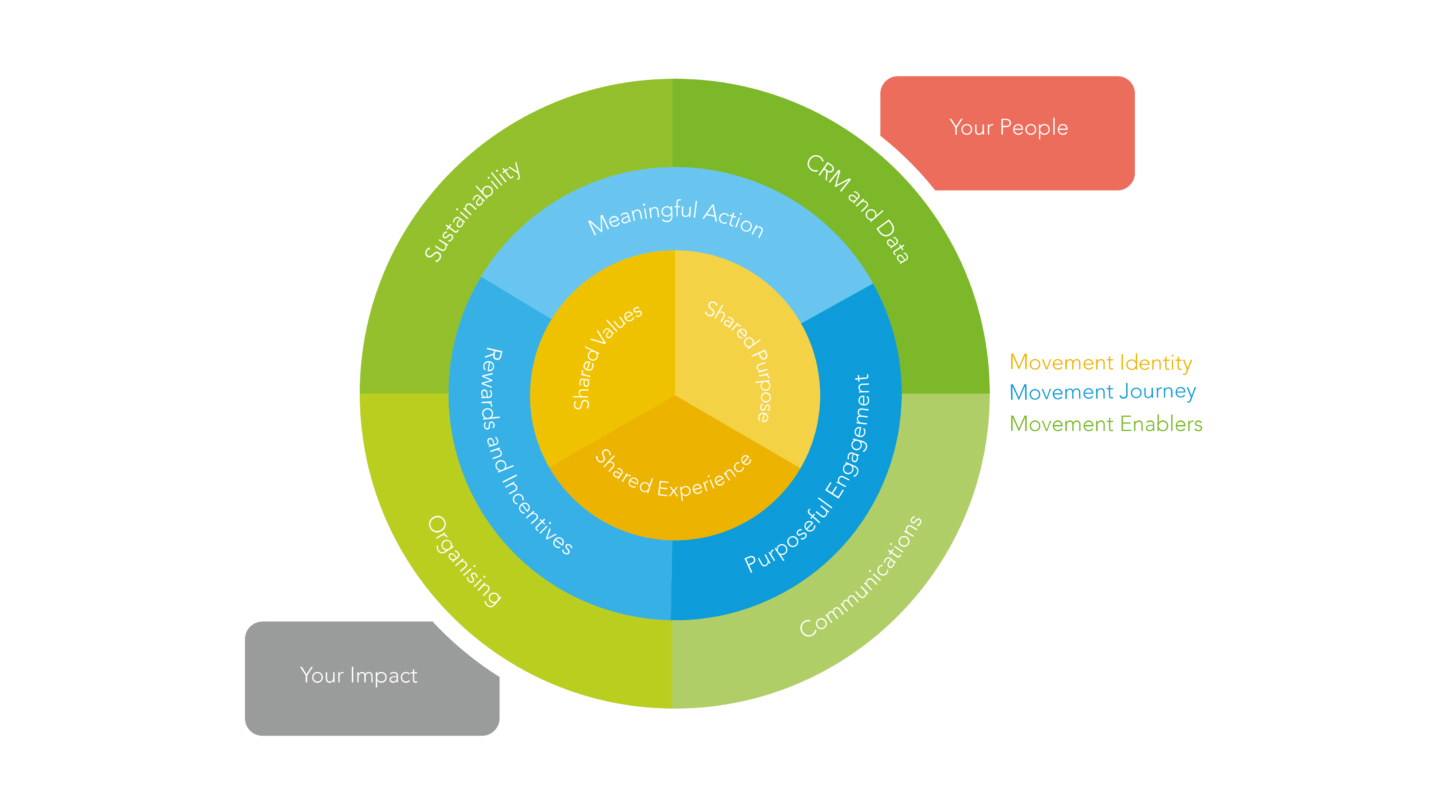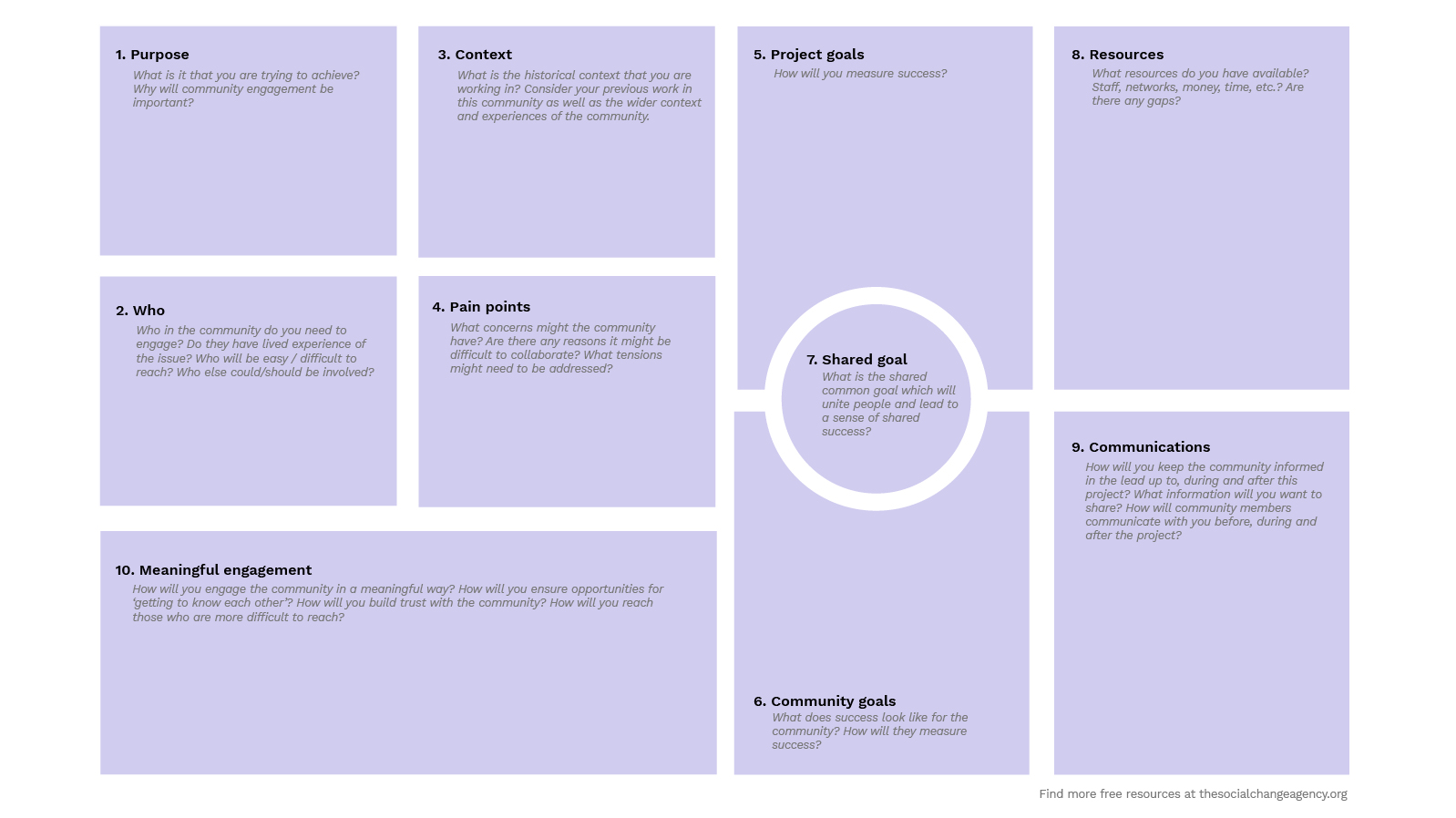We’re in this together – Reflecting on movement trends in 2023
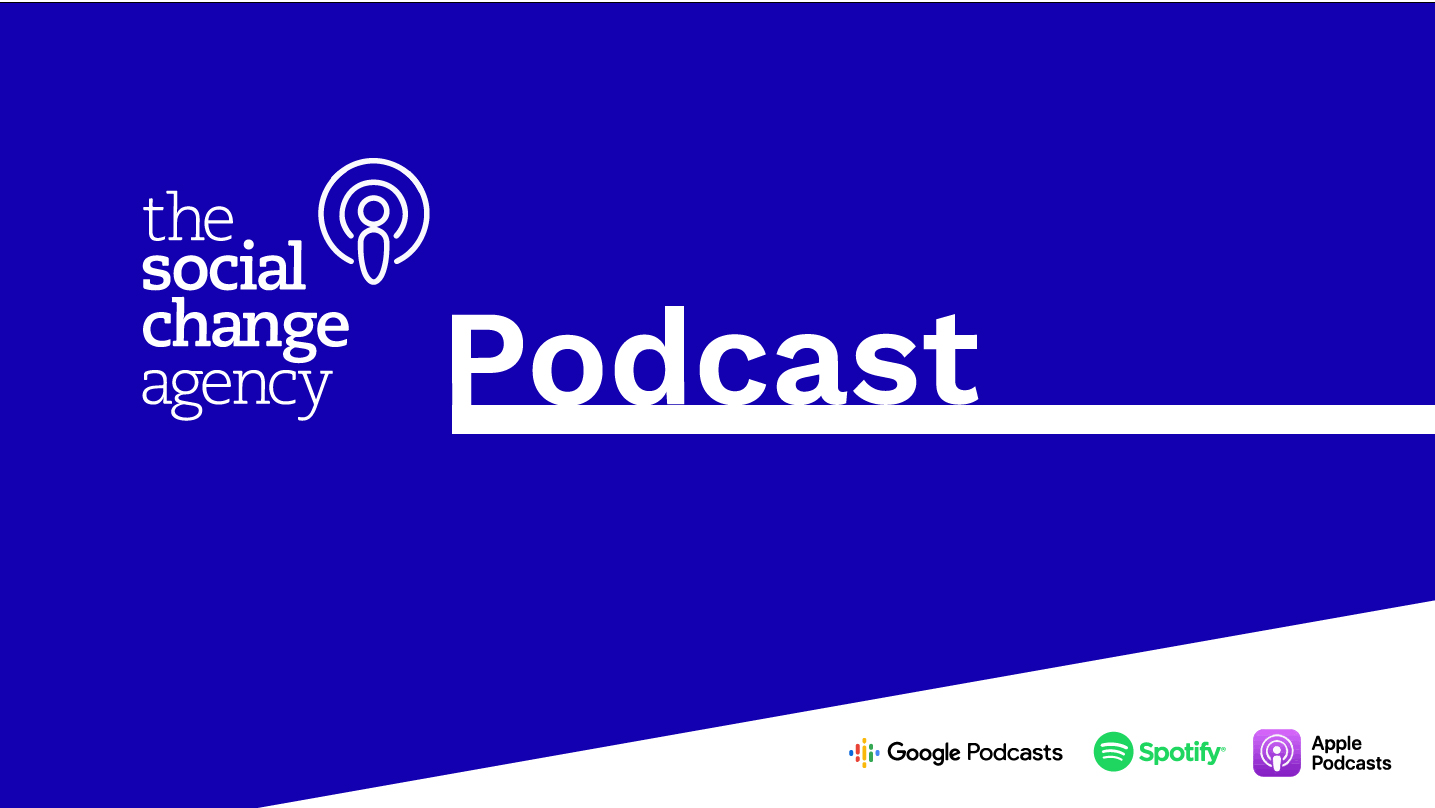
Tactics employed by social movements are evolving, strikes are enjoying unprecedented levels of public support, and communities are increasingly taking matters into their own hands.
Director of Practice Anya Stern and Consultant Aggie Taylor discuss some of the movement trends they’ve been observing in 2023.
What trends have you been noticing? Share your thoughts by tagging us on Twitter @SocialChangeAg
Public support for strikes is at an all time high
Anya: Welcome to The Social Change Agency podcast. I’m Anya, director of practice at the Social Change Agency and today I’m joined by my colleague Aggie. We’re going to be sharing with you some of the trends that we’ve been noticing in social movements here in the UK.
So one of the things that seems to be happening at the moment, we are in a period of so much going on publicly in terms of people collectively demanding change, whether it’s through social movements informally and activists, or whether it’s the labour movement and through strike action, obviously we are having an unprecedented period of strikes going on.
It feels powerful and it feels strong that everyone is coming together in this way. And it is hopeful.
Aggie: Yeah, I think a nice trend, or it feels like there’s a nice trend and then there’s obviously the other side of it. The nice trend that is really positive and feels really exciting to be going into 2023 with is the public support for strikes and for the labour movement, and the fact that in the run up to Christmas and then in between Christmas and New Year there were so many train strikes. There were the post strikes, there were the university lecturer strikes. There was loads going on, the buses in London and everything. And yet still, even when everyone was kind of, “oh, I can’t get my Christmas cards out” or, “I can’t get to this place”, there wasn’t any frustration and annoyance with the workers. There was a big “Oh, we understand and we are supporting this” and we are seeing now the teachers are balloting and I’m still hearing quite a lot, like loads and loads of support, which is really amazing.
And I think it comes from the other side, the not so nice side that everything is crap at the moment and the government aren’t doing what they should be doing, which is why everyone’s striking, but also why we have this public support. Because there’s this idea of you are in a terrible place. I’m also in a terrible place. I can understand that and I can see that and I can be in solidarity with you.
Anya: Yeah, it’s kind of like that the level of how difficult and how bad things are for people is so collective in a way that, everybody understands about not being able to pay your bills and everybody’s having to make those choices apart from a very few people. And those very few people are the ones who are in positions of power and have both created this situation over time, but also are refusing to deal with it. And I think that that’s something that I’ve noticed as well.
I’m old enough to remember <laugh> the eighties when there were a lot of strikes going on and a really strong government led by Thatcher who was just wanting to completely decimate the labour movement and that sense as well, of this government trying to be absolutely extreme and hardline, but not having the understanding that that’s not what the public mood is.
I think it feels like the government are on the fringe and everybody else is sitting in a different place. The us of people who want to make things different and better in the UK is getting much, much bigger and the them that are resisting is getting much, much smaller. And so hopefully that will be enough to tip the balance.
Aggie: It feels powerful and it feels strong that everyone is coming together in this way. And it is hopeful.
Social movements are evolving and tactics are changing
Anya: As well for me it’s thinking about movements in the long term and movements as lots of different people or organisations or actors trying to move the same thing and having different roles that they play at different times. We can focus on the climate movement, or gender movement, or racial movement, but there’s something about the general sense of civic justice and civic power that is going across lots of different themes and lots of different intersections and places. There’s an ebb and flow of different ones and how they move and what’s at the forefront at different times.
people are talking about climate justice and racial justice and feminism and class economic justice in a really kind of normal way as opposed to it being something out on the fringes.
But it feels like that whole idea around collective power and collective justice, and having transformational change in the way that we value the planet and each other and the way that we make decisions and the way that we support each other is shifting. There’s something as well that’s really exciting about the fact that people are talking about climate justice and racial justice and feminism and class economic justice in a really kind of normal way as opposed to it being something out on the fringes.
Aggie: Yeah, I think you’re right. And I think some of this change that you were talking about, this idea that some tactics are changing in some places and then other movements taking different approaches is right in that idea of, it really depends on where the movement is in the cycle, but also how these movements are being understood in the public. So this idea that these social issues that have sometimes been fringe topics are all coming out and becoming a normal part of our consciousness and our talking and things that people care about, which then makes it easier for there to be more action on it and more support and also a different variety of actions. XR saying that they’re going away from this kind of awareness raising and pointing out the crisis and talking about we need to act now.
Aggie: Because lots of the climate movement have done a lot of that work, there seems to be a general consensus that we are in this crisis and we do need to act now. And so now there’s the ability once we’ve got to this point to change, to ask how can we now have different kind of actions. How can we have actions that are community based and actions that are thinking about solutions instead of just telling everyone we’re in a climate crisis?
So we’re seeing lots of really cool changes. We’re [also] having communities that are saying, okay, if these people aren’t fixing this for us, let’s do it ourselves. Let’s build solar power stations ourselves. Let’s look at how food is produced in our community and come up with solutions and let’s hold warm spaces that also talk about other things that we’re interested in, such as racial justice or just a book club and all these kind of different ways of, of kind of pooling these.
It feels like we’ve come to a point where we’re not shouting out to say, can anyone join me? We’re saying, we’re all together now. Let’s act in this way towards it.
Aggie: So I think you are right, we do have this move from big protest action in some areas, but then this idea that it’s still important in other movements to be taking to the streets and to be taking to the picket lines and marching and demanding and showing up in the traditional way that we often think about social movements such as outside the parliament to say we need our rights to strike to be protected. We need our right to protest. So yeah, I think, I think it’s exciting the way the tactics are changing. I think it shows a change and it shows progression and lots of movements and it feels like the fact that organisations like XR are saying, we’re not gonna be shutting down the streets at the moment, we’re going to be looking at other things. And all these other climate actions are saying, yeah, we’re doing all these things. It feels like progress in so many ways. It feels like we’ve come to a point where we’re not shouting out to say, can anyone join me? We’re saying, we’re all together now. Let’s act in this way towards it.
Anya: I think that’s really true. I remember listening to a podcast of somebody, I think it was Dan Snow, it was a historian talking about just before Trump got elected and he was like, well in history, if we think about a hundred years or 200 years, or millennium, or whatever, the kind of response that was going on in the states, obviously Brexit here and then towards getting Trump elected and stuff, is the kind of like the last gasp of a dying animal, right? That it’s fighting for life. I suppose for me, that’s where I get my hope from. This idea that it is the last gasp of acceptance of inequality, or acceptance of depletion of resources and things like that. And that the people who are are going to lose the ability to control everything are fighting back. So if you look on a small scale, it’s kind of really awful.
Anya: But I suppose for me, my hope comes from a bigger scale and seeing as well lots of things of reproductive rights and other women’s rights, which are always kind of like a canary in the coal mine, right? That’s where people attack first. [It’s] getting so much worse in lots of places, but in other places like in Latin America, it’s completely getting better and so things are moving and that it’s not a simple question of things moving in one direction or another. It’s really interesting how both how big the world is and how small the world is in terms of these things and the way that things feel both, hopeful and awful, but a lot of that’s to do with scale in a sense. And I think what we talked about at the beginning, the level of the problem.
Anya: But then I look at my child’s school and the conversations that they have and the things that are so normal that they talk about in terms of climate justice, in terms of gender identities, in terms of just the way that they think about community and things.
I started at the beginning talking about [how] some of this felt familiar to me from my childhood in the eighties, but also when I think about the way that children are now engaging in it, it’s completely different. And they have a language and an understanding about things which we just didn’t. And I think that these kind of generational shifts that we can see feel often like they are moving forward, but it’s the clawback and the sense that we have have to keep on fighting.
these things make a difference even if sometimes it feels like we are just fighting to stand still
I remember when there was that huge march, I think it was in 2003 against the Iraq war, under the Blair government. And I remember going and having no illusions that it would change anything but feeling like, but they have to, we have to make it painful and we have to make it difficult and we have to drag at their heels and shine a light and all of these things and that over time, put together, these things make a difference even if sometimes it feels like we are just fighting to stand still.
Aggie: I feel like maybe that’s the the natural conclusion to that one. It was a nice end sound bite. Should we talk about the last bit, the local communities taking action, this kind of shift to community spirit?
Communities are taking action
Anya: I think it’s interesting because like I wonder how much of that is, and we can never know these things, but this positive hangover from Covid, whether it’s really practical things like street WhatsApp groups and people know each other and people can talk about stuff and we just have the kind of mechanisms for doing that. Whether it’s the fact that we were all kind of like stuck in our communities essentially for two years and so they became as a physical space much more important. I think that that’s also been something that’s a positive thing that has been left over from it, as well as this sense of either the government are dealing with keeping people alive, or they’re not dealing with anything at all, so let’s just do what we can for each other and there’s an element of that that has held.
it’s not necessarily that community spirit is a leftover from the pandemic, but that in some ways it’s the, the knowledge that doing something is possible and does work
Aggie: I would agree. I think maybe it’s not necessarily that community spirit is a leftover from the pandemic, but that in some ways it’s the, the knowledge that doing something is possible and does work. We know that community groups and community organising has always been incredibly successful, but I think the pandemic was one of these times when so many people got a chance to participate in it and see that, even if it seemed like small things like food parcels, or collecting medicine, or buying flowers or presents for your neighbours, or whatever it is, seeing how these things have a really positive effect. And I feel like there was a big lesson in, ‘oh, like we always talk about all these things that are going to happen, and then people got a chance to actually do it and see the positive and realise that now actually when we’re in the next crisis, which feels a bit craps to say, people know what works and yeah, as you said, they have the ability, they have the numbers, they have the reach.
It’s interesting because we know that lots of the more official mutual aid groups haven’t really survived from Covid to now, but the idea of community solutions and community action really has. So we see it loads with the responses to the cost of living crisis and providing warm spaces over the Christmas and over the cold periods and things like that. And it’s exciting that there’s this.
I was talking to someone today who was talking about this leftover, this kind of like push that’s come from Covid and it’s being carried on, of keeping the idea of solidarity not charity and keeping the idea of, we’re in this together and together we have some of the solutions and that is partly because we are strong as a community and we can do it and we’ve seen that we can do it. And partly because we understand that the people who we traditionally look to do this, the government and our local governments and even charities who are just struggling with capacity and money aren’t able to do this. And so we are now taking to do it on our own. And so you see some really nice initiatives coming up where there’s this push to get everyone involved and everyone to be part of it. And it’s not ‘we’re just handing out things to these people that need’, it’s, ‘we’re all in collective need and we’re all gonna band together and do something exciting’. We see action. We’re seeing action everywhere in all social spheres. We are seeing this heightening in community action.
It’s about sharing skills. It’s about tackling isolation. It’s about climate and resources. It’s about cost of living. It’s encompassing all of these different things
Anya: I’ve seen the rise of community repair cafes and things like that as well. That’s about coming together. It’s about sharing skills. It’s about tackling isolation. It’s about climate and resources. It’s about cost of living. It’s encompassing all of these different things that are coming together in terms of what is a person’s experience in life, what is our collective experience in life? What is the experience that we want our children and grandchildren and everybody else to have? And there is something about the ability for us to understand that lots and lots of small actions together will change our experience of life, but it’s also part of a bigger change. And I think that’s something that is really seen at community level.
Aggie: I mean it’s diverse entry points, isn’t it? It used to be, it felt like you joined, or sometimes it felt like you joined movements if you had a certain identity and you were like, yes, I am this person and I believe in this and therefore that’s I fight for and I’ll join all these local things and these national things that go in with this movement that I’ve chosen. Whereas now it feels like there’s all of these diverse entry points, like you were saying about repair cafes and like community gardens and community centers, that look at lots of different things and libraries that host different groups and all these things that mean there’s so many different ways of people getting involved in these movements that we’re seeing, or we’re seeing many more people, we’re seeing a more heightened understanding of these social issues.
[Read more: Communities know best what they need to flourish]
Aggie: I feel like maybe we’re going around in circles, but I feel like it really points to this heightened understanding and ways to get involved and to do exciting things. Movements are no longer just, I mean they’ve never been, but there’s often a public understanding that if you’re in a movement you are there, you’re protesting, you’re holding a banner. That’s how you join a social movement. But we are seeing that people’s entry points are much more ‘what’s going on in my street? What’s going on around my corner? What’s this little place where I’m coming together and sitting and talking to people and doing these small actions, which are ending up with this long term transformational change of, ‘we value each other, we value the world, we value the environment, and we are making these steps to ensure that these values are embedded within all our actions, the way we live our life, but also the way we care for each other and protest and try and change the government and things like that’
Anya: Thanks for listening. We’d love to hear your thoughts on this. You can join the conversation by tagging us on Twitter @SocialChangeAg. You’ll also find us on LinkedIn or you can simply send us an email. We also like flowers and big boxes of chocolates.
Hear from more inspiring change-makers on The Social Change Agency podcast
